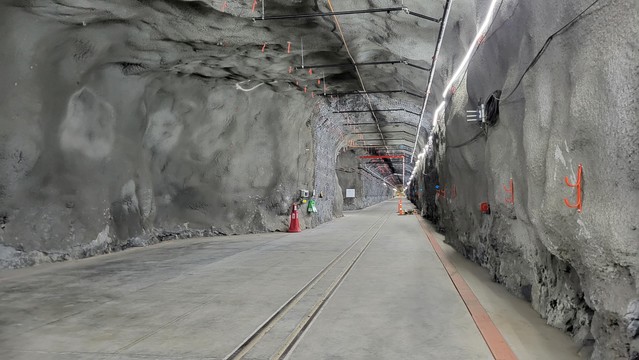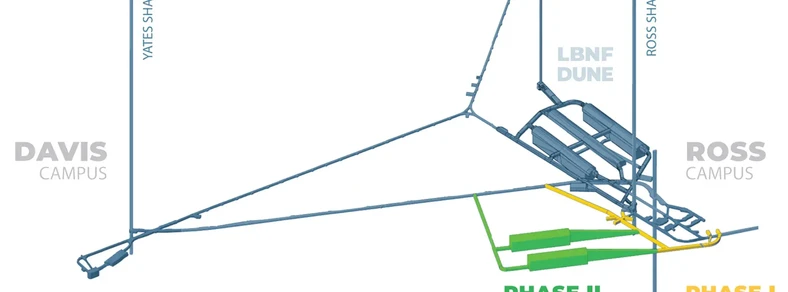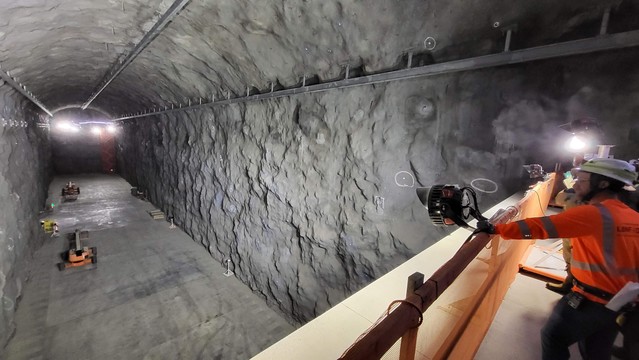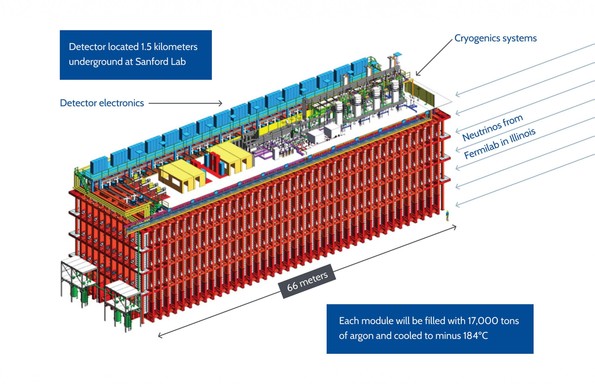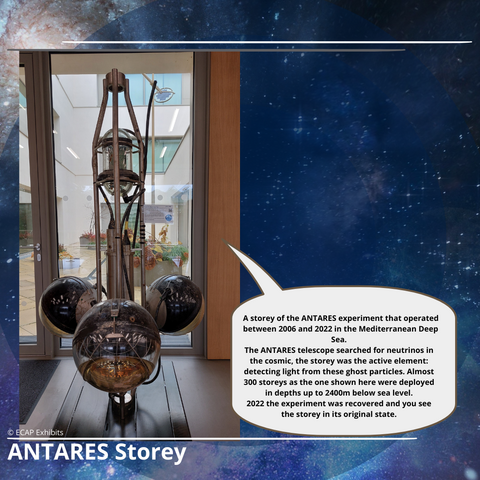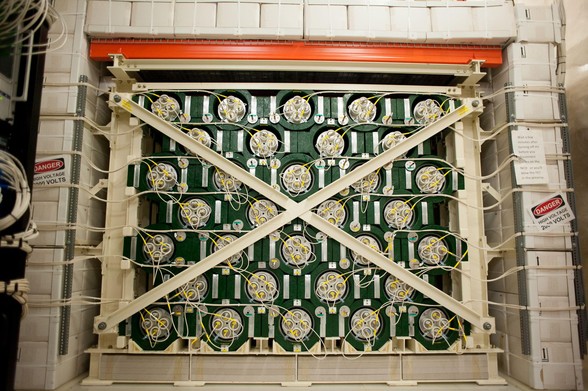Exploding #BlackHole May Be Responsible for Most Powerful #Neutrino Ever Found - YouTube
#Science #SciComm by #AntonPetrov
Recent searches
Search options
#neutrino
Let’s take a look at the next installment from my visit to #SURF last week. After arriving at the Ross Campus, we walked from the end of the tram line to the first of the VERY large DUNE caverns. DUNE is the Deep Underground Neutrino Experiment and will consist of huge neutrino detectors comprised from 17,000 tons of liquid argon. 800,000 tons of rock has been excavated to make the caverns.
THEY. ARE. HUGE.
Each is over 100m long.
I will share more information soon regarding the site visit to #SURF, a sister underground laboratory to #SNOLAB. I want to share now that the "Deep Talk" lecture I delivered last night at the SURF Visitor Centre was an incredible experience. I was especially excited to be able to personally interact with over a dozen audience members. This included an awesome small-group Q&A session after the formal event.
Watch the lecture online:

Decades ago, astrophysicist Stephen Hawking theorized that the Big Bang could have flooded the universe with tiny black holes, but the theory was never proven.
A group of researchers thinks they've found proof — with the discovery of a "stupendously powerful neutrino" at the bottom of the sea. The new hypothesis, not yet peer-reviewed, is that the neutrino is the signature of an evaporating black hole.
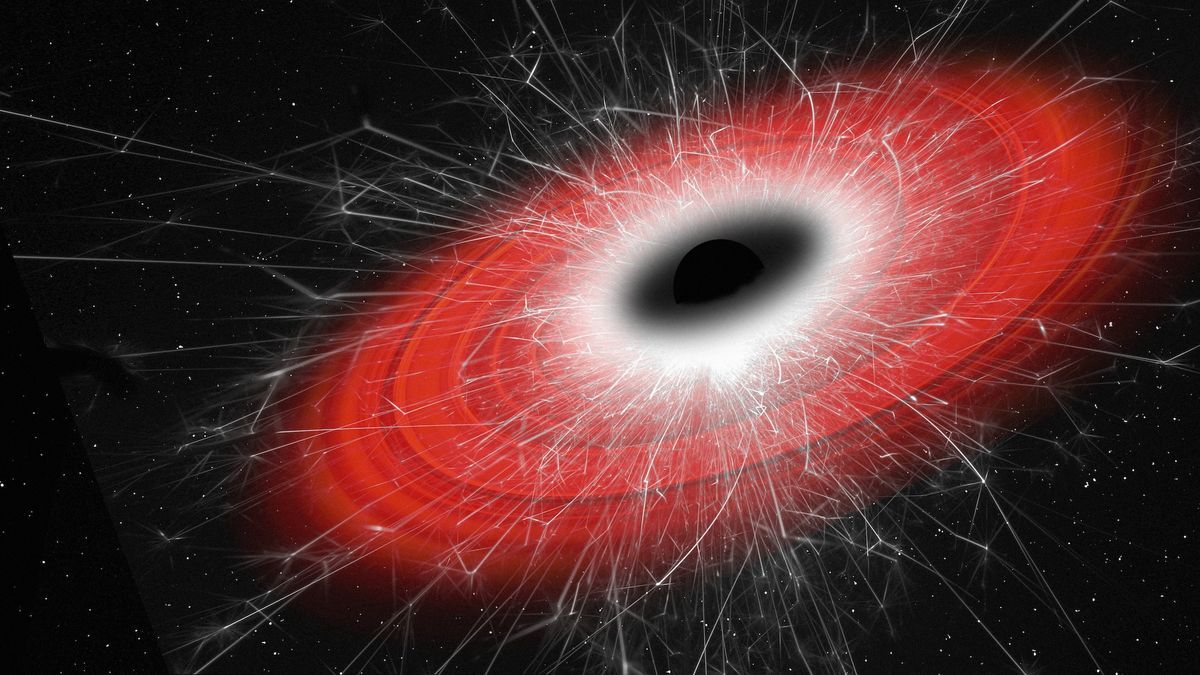
Kumiko Kotera, la reine des grandes antennes
Par Louise Mussat
https://lejournal.cnrs.fr/astrophysique-espace-kotera-rayons
#science #astrophysique #violence #Univers #cosmos #Paris #France #Argentine #pampa #Chine #désert #Gobi #neutrino #recherche

Three weeks ago, the scientific journal Nature @nature reported the discovery of the most energetic #neutrino ever observed. Its energy is 16,000 times greater than the strongest particle collisions created by the Large Hadron Collider and corresponds to 30 times the energy needed to press a computer key.
The neutrino was discovered in an underwater observatory in the Mediterranean, one of three neutrino detectors in water - two in the Mediterranean and one at Lake Baikal. At the geographic South Pole, there is the #IceCube neutrino detector under the ice. Other detectors exist underground in China, Italy, and Japan.
All these #detectors are not located on the Earth's surface because the Earth itself acts like a #telescope for neutrinos. Neutrinos are extremely light, electrically neutral particles that interact very weakly with matter and pass through the Earth. When they collide with atomic nuclei, charged particles are produced that move faster than light in water or ice, emitting blue light that is captured.
Water and ice are ideal media for detecting neutrinos because they provide large volumes to detect these particles while shielding against cosmic radiation and other disturbances. IceCube even utilizes 1 cubic kilometer of ice.
Neutrinos are the second most abundant particles in the universe, after photons, but are difficult to study because they interact so little with matter. Interestingly, dark matter and dark energy, which make up 95% of the universe, also interact very weakly with normal matter, while the remaining 5% consists of elements like #hydrogen and #helium, of which only 0.5% is visible matter (such as #stars).
In addition to all the other things going on right now, I am enjoying several days of shift on the #HALO supernova early warning project.
There have been no early warnings, since I took over shift, of a #supernova … for the record.
But the team continues to keep the detector running with high uptime as we patiently wait for the next galactic detonation of a heavy dying star!
Scientists Detect Ultra-High-Energy Neutrino That Could Reshape Cosmic Understanding https://www.byteseu.com/770425/ #CosmicUnderstanding #Neutrino #Science #Telescope
Super neutrino : vers une nouvelle ère de l’astronomie ? – (Vidéo, 11:40 min)
Entrevue avec Antoine Kouchner et Miles Lindsey Clark
https://leblob.fr/videos/super-neutrino-vers-une-nouvelle-ere-de-astronomie
#science #astronomie #astrophysique #physique #neutrino #Universcience
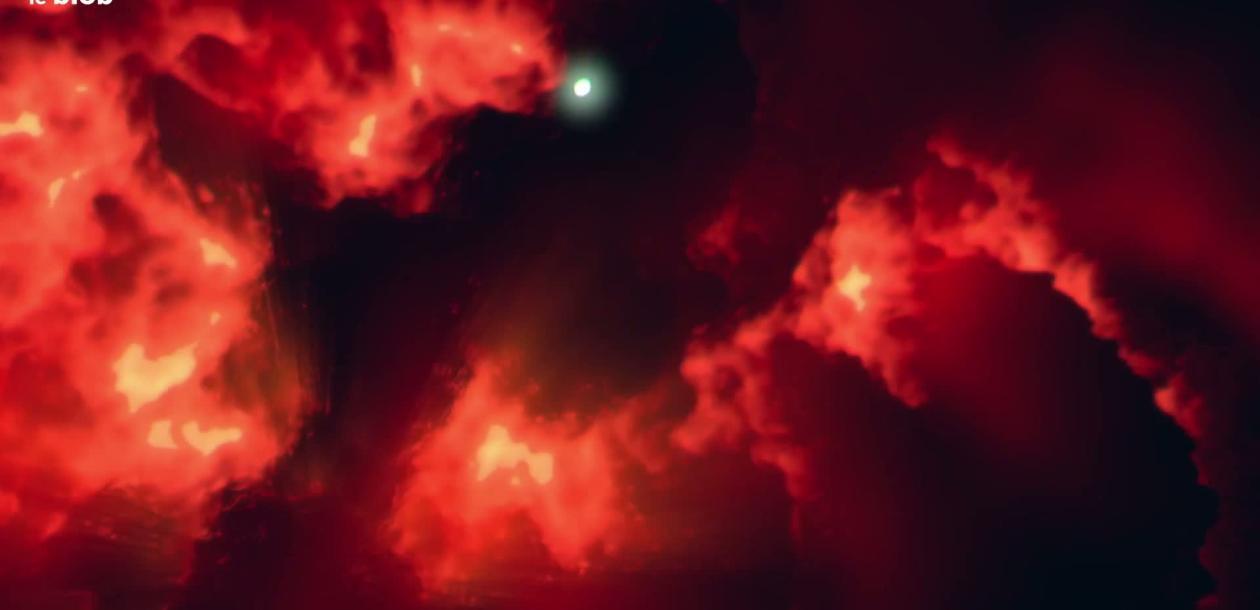
Neutrino 1.6.0! Nova versão! Muitas novidades e melhorias! O Neutrino acaba de receber uma atualização incrível que promete turbinar seu desempenho em jogos!
Não fique de fora, venha conferir todos os novos recursos e modos para o GSM! Clique e assista agora! #Neutrino #Games #Atualização https://www.youtube.com/watch?v=ocqc5AX_4_s
xkcd 3053 [ https://xkcd.com/3053/ ] clued me to the KM3NeT neutrino detector deep in the Mediterranean Sea [ https://www.km3net.org/km3net-detects-the-highest-energy-neutrino-ever-observed/ ] (the details of which are pretty mind-boggling).
The KM3NeT collaboration just published a paper on the highest-energy neutrino ever seen — the event in question occurred almost exactly two years ago. This single particle, with a mass something like a half-millionth that of an electron, slammed into the sea with enough energy to raise an apple about a foot (1/3 joule). A light punch on the arm.
The paper is in Nature: [ https://www.nature.com/articles/s41586-024-08543-1]
What was actually detected was the Cherenkov radiation from a single high-energy muon, produced from the interaction of the originating neutrino with sea water.
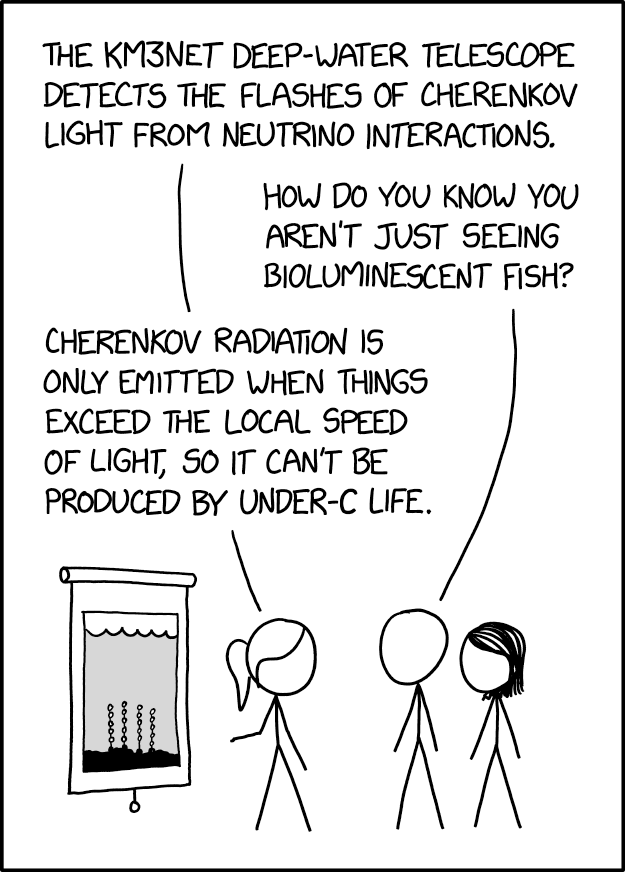
The most energetic 'ghost particle' ever detected just crashed the cosmic party. Neutrinos: the universe's ultimate photobombers. #Neutrino #SpaceScience https://scitechdaily.com/a-deep-sea-telescope-just-detected-the-most-energetic-ghost-particle-ever/
Détection d’un neutrino d’ultra-haute énergie
https://lejournal.cnrs.fr/articles/un-neutrino-eblouit-lastrophysique
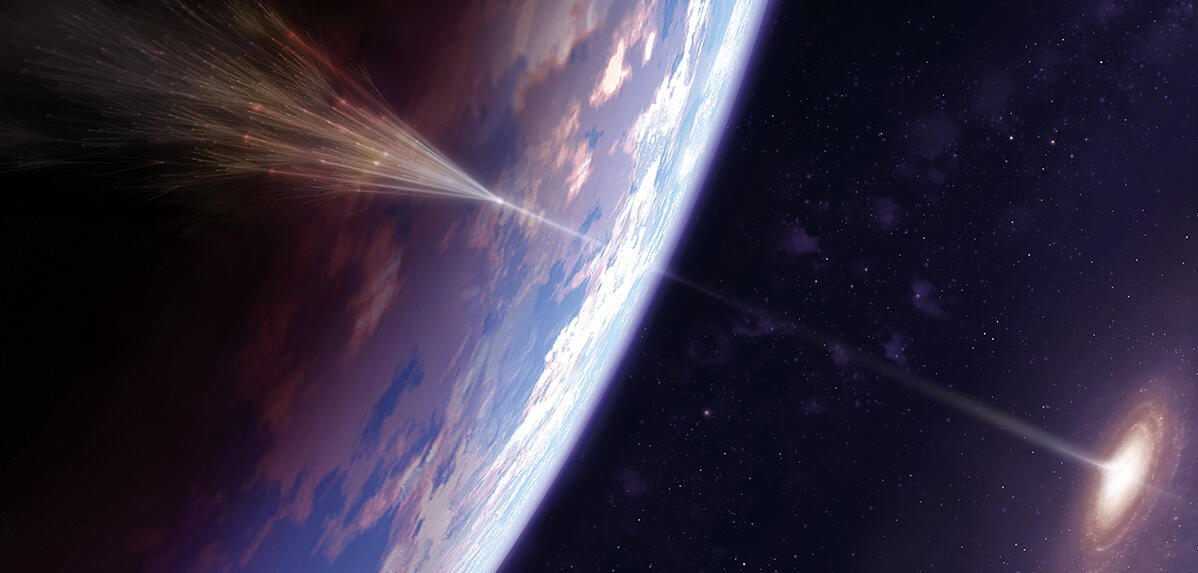
I ricercatori dell'Istituto Nazionale di Fisica Nucleare quando hanno notato il flash di luce generato dal #neutrino al largo della Sicilia be like:
Mittelmeer: Monster-Neutrino aus fremder Galaxie vor Sizilien entdeckt
Als ich das Bild mit der überschrift sah, dachte ich das Foto zeigt ein sehr großes #Neutrino, LOL
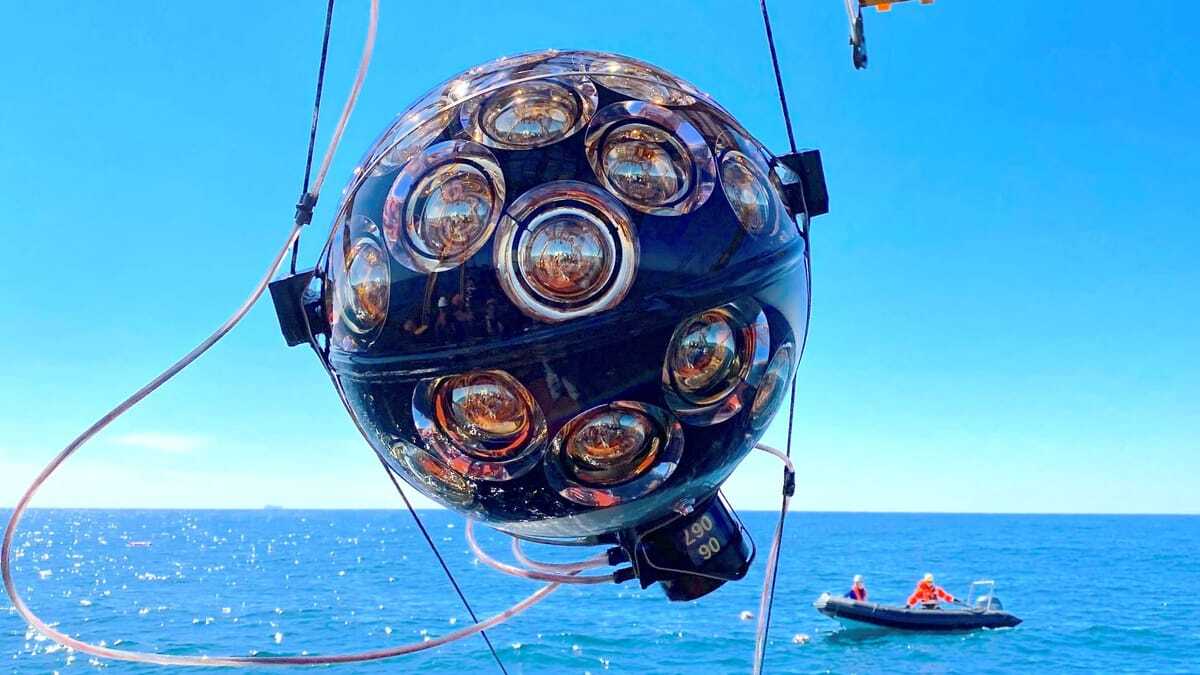
Exciting news from the depths of the Mediterranean Sea! A submerged neutrino detector has identified the most energetic "ghost particle" ever observed, with energy levels 30 times higher than previous records. This discovery could shed light on high-energy processes beyond our galaxy.
#Neutrino #Physics #Space #GoodNews
https://apnews.com/article/high-energy-neutrino-ghost-particle-c8177a5eabdcab2fd045d92e872e1fb1
#recurrence_plot analysis reveals periodic jet flaring and zig-zag evolution in PKS 1717+177, hinting at hidden #black_hole interactions and #neutrino emission. https://academic.oup.com/mnras/article/535/3/2742/7906601
Seafloor detector picks up record #neutrino while under construction
For context, the most powerful particle accelerator on Earth, Large Hadron Collider, accelerates protons to an energy of 7 Tera-electronVolts. Neutrino that was detected had an energy of at least 60 Peta-electronVolts, possibly hitting 230 PeV.
Attempts to trace neutrino to a source make it clear that it originated outside our galaxy, although there are a number of candidate sources in distant Universe.
https://arstechnica.com/science/2025/02/most-energetic-neutrino-yet-seen-smashes-through-seafloor-detector/
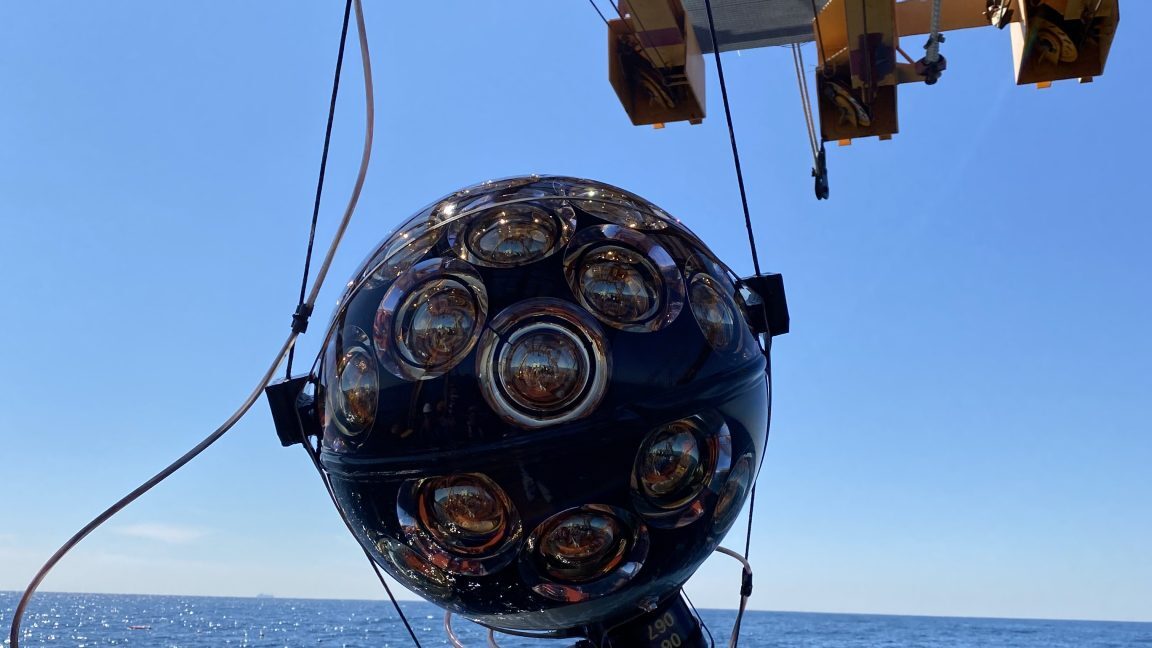
#recurrence_plot analysis reveals periodic jet flaring and zig-zag evolution in PKS 1717+177, hinting at hidden #black_hole interactions and #neutrino emission. https://academic.oup.com/mnras/article/535/3/2742/7906601
La bellissima storia del #neutrino rilevato due anni fa nel Mediterraneo, al largo delle coste siciliane. È il neutrino più energetico mai osservato e potrebbe provenire dall'esterno della nostra galassia!
https://www.wired.it/article/neutrino-cosmico-altissima-energia-esterno-galassia-infn/



